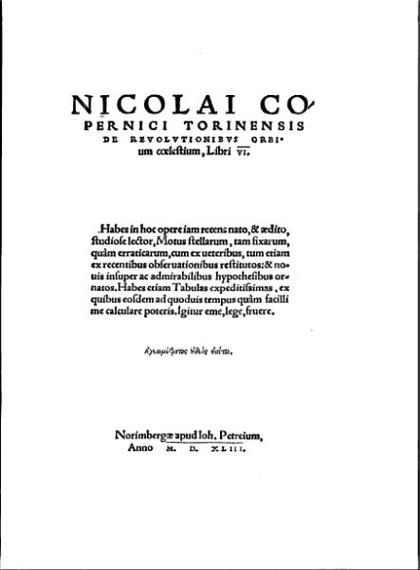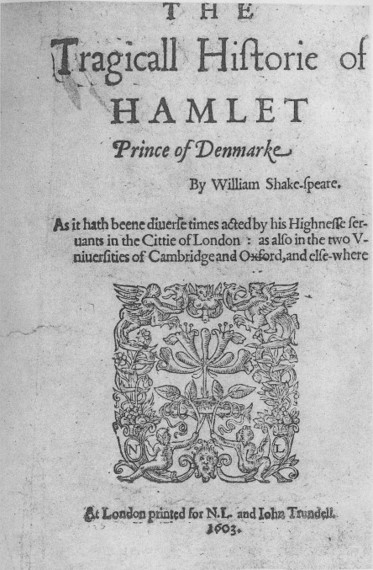Last Saturday, I saw a screening of Shakespeare's "Hamlet," transmitted from the National Theater in London, with Benedict Cumberbatch in the title role. This was an unforgettable production. While watching the play, a few beautiful lines from Hamlet's letter to Ophelia (that I have heard many times before) caught my attention in a new way:
"Doubt thou the stars are fire,
Doubt thou the sun doth move,
Doubt truth to be a liar,
But never doubt I love."
From an astronomical perspective, there are two interesting points in these lines. First, Shakespeare identifies the stars as sources of heat and light. Second, he is talking about a Sun that moves. Since Copernicus's book On the Revolutions of the Celestial Spheres was published in 1543 (Figure 1), and "Hamlet" is thought to have been written around 1601 (published in 1603; Figure 2), one may wonder if Shakespeare knew about the Copernican Sun-centered system. In 1964, W.G. Guthrie published an article entitled "The Astronomy of Shakespeare" in The Irish Astronomical Journal. In it, he reviewed all of Shakespeare's writings and concluded that in spite of the fact that the Copernican doctrine had by Shakespeare's time been accepted by a few of the more daring intellectuals, the Ptolemaic geocentric theory still held strongly, and Shakespeare adhered to it. A few examples seem to support this conclusion. For instance, in "Troilus and Cressida" we have the line "as true as earth to th'centre," and in the same play:
"And therefore is the glorious planet Sol
In noble eminence enthroned and sphered
Amidst the other; whose medicinal eye..."
Both of these indicate a belief that the Earth is the center, while the Sun ("Sol") is just another planet. A rather different opinion was expressed by Penn State astronomer Peter D. Usher, in 1997. Usher suggested that the entire play "Hamlet" is in fact an allegory for the conflict between the world model of the British scientist Thomas Digges and that of the Danish astronomer Tycho Brahe. Digges was a Copernican, who in a pamphlet published in 1576 (entitled "A perfit description of the celestiall orbes") suggested that stars were objects like the Sun, and that they were distributed through infinite space. Brahe still believed in a crystalline sphere of fixed stars inside which the solar system was embedded. To support his speculation, Usher noted that the families of Shakespeare and Digges were acquainted, and that through Digges, Shakespeare would also have heard of Brahe. Usher also pointed out that the names Rosencrantz and Guildenstern (Hamlet's treacherous friends) were the names of Brahe's ancestors.
We shall probably never know with certainty whether Shakespeare indeed intended "Hamlet" to also represent the battle that was associated with one of the biggest revolutions in the history of science. The mere fact that we can even consider that possibility, only adds to the greatness of this monumental genius.

